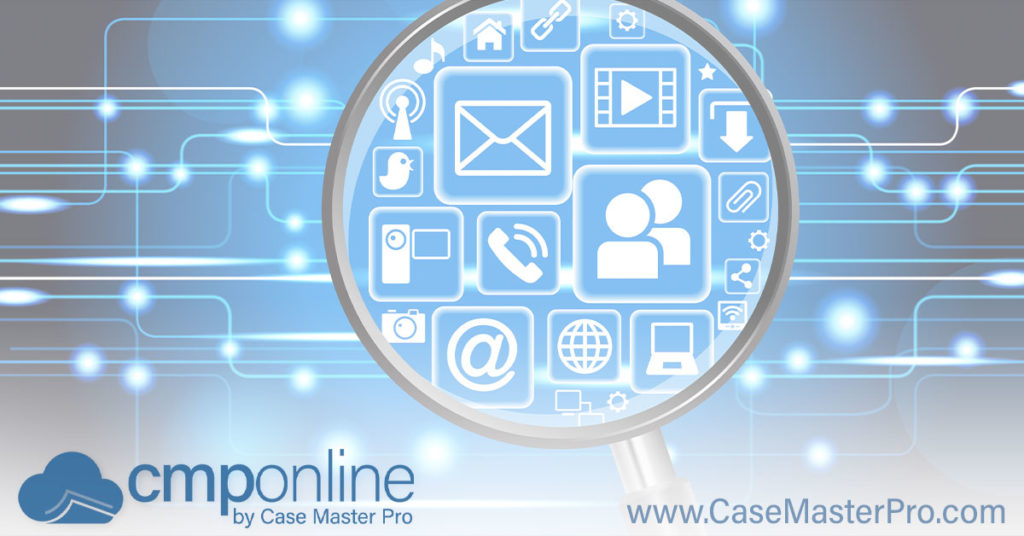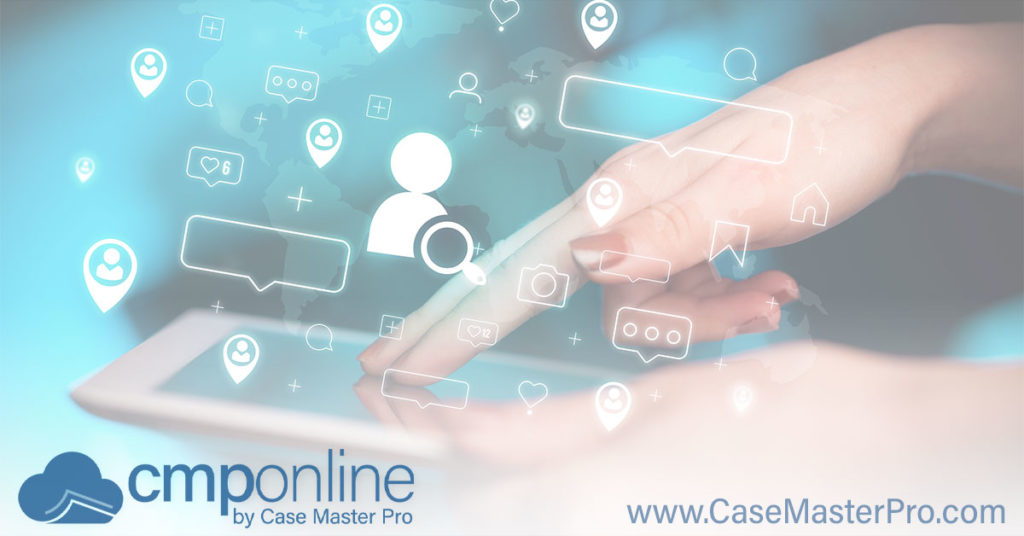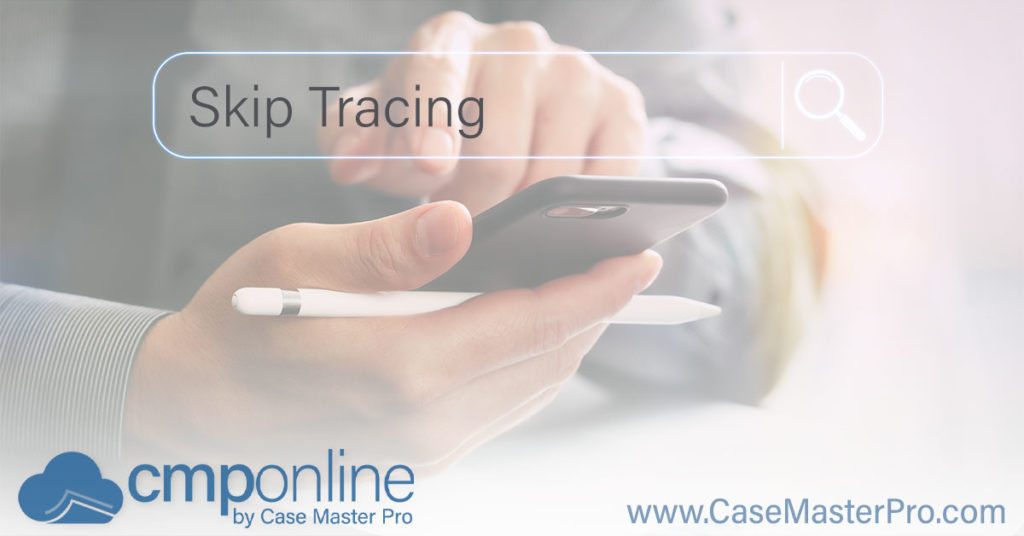
Ever felt like a detective on the trail of a missing person? That’s exactly what it feels like when you’re involved in skip tracing for debt collection. It’s not just about chasing money – it goes beyond conventional methods of debt collection to utilizing databases, online research, and reference calls to unveil crucial information about debtors. By employing a combination of these techniques, collectors can enhance their ability to trace individuals who have proven challenging to locate. Whether you’re new to this or have some experience under your belt, we know it can be daunting.
Skip tracing is a vital tool in the realm of debt collection, encompassing a range of techniques aimed at tracking down individuals who owe money. In this comprehensive guide, we delve into the intricacies of skip tracing, providing you with the knowledge and strategies needed to locate elusive debtors.
The Role of Skip Tracing in Debt Collection
Understanding the role of skip tracing in debt collection starts with recognizing its core function. Simply put, skip tracing is a strategic process used to locate individuals who have become difficult to find, often referred to as ‘skips.’ These can be people who owe debts and are evading repayment.
Defining Skip Tracing in Debt Collection
Skip tracing isn’t just about finding a person, it’s about locating their assets too. The goal here is not merely locating debtors but identifying any hidden resources they might possess that could settle outstanding debts. It involves researching public records, online databases, credit reports, and more – anything that gives clues on how to locate debtors.
In this context, attorneys and their staff play an essential part as they use advanced skip tracing techniques, such as data aggregation from multiple sources for better accuracy.
The Importance of Skip Tracing Tools
Skip tracing tools serve a crucial role when it comes down to effective debt recovery. They help by simplifying the collections process and providing critical details swiftly – like a consumer’s workplace or business name and location. This efficiency leads us back towards our primary objective: settling unpaid bills through accurate information gathering.
A practical example includes services like LexisNexis Accurint for Collections, which helps businesses streamline their operations by offering comprehensive data solutions.
Beyond being efficient time-savers, these tools also add layers of legal protection because they ensure all collected information adheres strictly within compliance boundaries – another reason why having robust skip trace capabilities at your disposal can significantly improve your chances at successful recoveries.
The Art and Science of Skip Tracing Process

Skip tracing is a critical part of the debt collection process by involving artful investigation techniques coupled with scientific precision. The goal? To locate elusive debtors who have gone off the grid.
Techniques Used in Skip Tracing
A variety of methods are employed by professionals during the skip tracing process. These advanced skip tracing techniques can range from basic internet searches to using sophisticated software solutions like the RNN Group.
Data aggregation tools are essential for investigators to obtain data regarding a person’s identity or location from different sources. Professionals may also leverage social media platforms and public records databases to get leads on debtor whereabouts.
Besides digital sleuthing, traditional investigative skills still hold their place in this high-tech world. A good investigator knows how to interpret data correctly and follow up on potential leads efficiently without infringing on any legal boundaries.
Essential Resources for Effective Skip Tracing
In order to streamline the skip tracing process, having access to efficient resources is crucial. This includes both technological tools and human expertise.
Some essential tools often used by professionals involved in skip tracing for debt collections are:
- RNN Group—An industry-leading entity known for its innovative use of technology in skip tracing for debt collection, leading collectors to find place of employment sources and intuitive ways to scrub cases in bulk.
- Tracers—Cloud-based public and private records software for skip tracing.
- LexisNexis Accurint for Collections—a comprehensive resource that simplifies finding critical details such as addresses, drivers licenses, workplaces, and other valuable information quickly.
- Tio—Investigative tool used to locate individuals or businesses that can map out relationships between persons of interest (POI), relatives, and associates.
Moreover, professional skip tracers often work in tandem with private investigators who bring their own set of skills and resources to the table. These could include access to restricted databases or specific industry knowledge that aids in locating a person of interest.
So whether it’s employing advanced digital tools or traditional investigative techniques, skip tracing for debt collection is indeed an art backed by science.
Key Takeaway: While these digital tools are indispensable, the importance of traditional investigative skills cannot be overstated. The ability to interpret data accurately and follow up effectively makes a significant difference in locating debtors.
Best Practices to Enhance Efficiency in Skip Tracing

Skip tracing can be made more efficient by following certain guidelines and using successful approaches. Here are some of the key steps that can enhance efficiency in skip tracing.
Ensuring Data Accuracy in Skip Tracing
Data accuracy is crucial when you’re on the hunt for hard-to-find debtors. Having accurate information about your person of interest (POI) makes it easier to locate them.
You should make sure all data collected during skip tracing is verified before making any decisions based on it. This includes employment verification as well as confirming residential addresses and contact numbers.
This approach will save time and resources by preventing wasted efforts chasing inaccurate leads. It also helps maintain legal compliance because acting upon incorrect or outdated debtor information could lead to potential lawsuits or fines.
Legal Considerations in Skip Tracing
The laws governing skip tracing vary from one jurisdiction to another, so understanding these legal considerations plays a significant role in how efficiently you conduct your search.
You need an intimate knowledge of privacy laws pertaining to locating people who do not want to be found – whether they’re evading debts or simply prefer their privacy intact. An expert private investigator knows this delicate balance between aggressive pursuit and respect for personal boundaries. Always ensure actions taken align with ethical guidelines set forth within professional circles, such as those involving lawyers or other law professionals engaged in debt collection tasks.
Note: Missteps here may land agencies into trouble resulting in not just loss of reputation among peers but also serious penalties enforced by authorities overseeing financial matters, including credit reporting organizations.
The practice of bankruptcy scrubbing is another crucial legal consideration in skip tracing. This process involves identifying debtors who have filed for bankruptcy, allowing you to exclude them from your collections efforts as required by law.
A combination of advanced skip tracing techniques, a comprehensive understanding of the legal landscape, and accurate data collection will certainly enhance efficiency when tracking down elusive debtors.
Best Practices for Effective Skip Tracing
- Data Accuracy: Ensure the information collected is accurate and up-to-date, minimizing the risk of false leads.
- Compliance: Navigate the legal landscape by adhering to regulations and guidelines governing skip tracing activities.
- Persistence: Success in skip tracing often requires persistence. Adopting a tenacious approach can yield results where initial efforts might fall short.
Comparing Skip Tracing Services – The RNN Group Vs Others
In the world of skip tracing, it’s crucial to find a service that offers efficient and accurate results. A standout in this field is the RNN Group, known for its advanced techniques and effective approach.
RNN Group: Leading with Innovation
The RNN Group has established itself as an industry leader through innovative use of technology. Their methods are built on a foundation of vast data resources which allows them to locate persons of interest swiftly.
This company stands out due to their utilization of professional investigators who bring valuable skills into play when conducting debt tracing operations. They leverage advanced skip tracing techniques combined with cutting-edge software tools, giving them an edge over competitors.
How Other Companies Stack Up
When comparing other services against the RNN group, several differences emerge. Some providers rely heavily on traditional approaches or limit themselves to less comprehensive databases, affecting both speed and success rates in locating individuals tied up in debt collection cases.
A few might have impressive track records but lack scalability required by larger law firms handling numerous collections at once. Such limitations can result in slower recovery times, thus impacting cash flow adversely for businesses awaiting settlements from these debts.
Benchmarking Success: The Inc 5000 Factor
The difference between good and great often comes down to performance metrics — something that shines brightly for the Inc 5000-ranked RNN Group whose accolades speak volumes about their commitment towards delivering exceptional results consistently across diverse scenarios involving complex cases or large volume accounts receivable portfolios needing swift action.
LexisNexis Accurint for Collections – A Comprehensive Tool for Debt Collection
When it comes to debt collection, having the right tools at your disposal can make all the difference. LexisNexis Accurint for Collections is one such tool that offers comprehensive assistance in this regard.
This robust tool helps legal professionals and collection agencies find crucial debtor information quickly and accurately. It serves as a reliable resource when traditional methods of tracking down individuals prove ineffective or time-consuming.
The Unique Features of LexisNexis Accurint
LexisNexis Accurint for Collections is known for its extensive database containing millions of records about consumers’ workplace details or business names and locations. These pieces of data often serve as key starting points in locating people who owe money but have seemingly disappeared.
Incorporating Best Practices into Your Skip Tracing Efforts
A good strategy incorporates best practices alongside high-quality tools like LexisNexis Accurint for Collections. While relying on sophisticated technology certainly streamlines processes, successful debt recovery also depends heavily on methodical research and strict adherence to ethical guidelines set by regulatory bodies.
Taking care not only speeds up your efforts but also ensures they stay within legal boundaries – an aspect equally important as getting results. So remember: using powerful resources responsibly goes a long way in enhancing the efficiency of your skip tracing operations.
Boosting Your Debt Recovery Success with LexisNexis Accurint
The potential of this utility is immense. It offers an effective way to enhance your debt recovery strategies by providing accurate, up-to-date information about hard-to-locate individuals. As such, it’s a valuable addition to any legal professional or collection agency’s arsenal to collect outstanding balances. By making use of LexisNexis Accurint for Collections, you’re not only simplifying your debt recovery process but also increasing the likelihood of success. It’s an essential tool that helps to track down hard-to-find debtors and allows you to concentrate more on recovering what’s owed.
Key Takeaway: LexisNexis Accurint for Collections is a powerful tool that helps find key debtor information quickly and accurately. It’s known for its extensive database, making it easier to locate elusive debtors. Remember, effective skip tracing combines this tech with best practices and ethical guidelines to speed up your efforts legally. Make sure you’re using LexisNexis Accurint responsibly, as it can make a big difference in the success of your collections strategy.
The Role of Attorneys in Debt Collection Through Skip Tracing

Attorneys play a pivotal role in debt collection, often employing skip tracing to locate elusive debtors. By harnessing advanced skip tracing techniques, attorneys can streamline their efforts and boost the efficiency of legal debt collection.
Tactics Used by Lawyers in Skip Tracing
An effective approach adopted by many legal professionals is integrating skip trace capabilities into their overall case management strategy rather than treating it as an isolated process. This allows attorneys not only to track down defaulters but also to analyze patterns across multiple cases – leading towards better strategic decisions. CMPOnline’s reporting feature helps in achieving this, enabling law firms to generate custom reports that provide insights into collection efforts and case resolution rates. In addition, this also allows firms to import debtor information into databases, such as the RNN Group, and scrub any uncollectable case matters.
CMPOnline’s billing feature is designed to cater specifically to law firms handling collections matters. The software offers a robust platform that incorporates advanced billing codes, allowing customization to meet diverse needs. This includes tailoring the software to support various investigative tactics required by legal clerks in their daily tasks.
Moreover, attorneys also leverage advanced skip tracing techniques like reverse phone lookups, social media tracking, and property records search. These tactics not only help locate the debtor but also give a clearer picture of their financial standing.
Key Takeaway: Attorneys play a crucial role in debt collection, often using skip tracing to find elusive debtors. By leveraging advanced techniques and tools, they can gather comprehensive data about persons of interest (POIs), including contact details and employment verification. The ability to sift through bankruptcy records saves time by avoiding efforts on individuals legally protected from debt recovery. Tools like CMPOnline offer strong support for these tasks, making the job more efficient.
Overcoming Challenges in Skip Tracing for Debt Collection
Skip tracing for debt collection is an essential tool for attorneys and legal professionals, but it’s not without its challenges. From unresponsive debtors to complex compliance issues, let’s delve into these hurdles and discover strategies to overcome them.
Dealing with Unresponsive Debtors
Finding the person of interest (POI) who owes a debt can be tricky. Some may purposely evade contact or have moved locations without leaving any forwarding information. This calls for advanced skip tracing techniques.
For this task, you may want to enlist the services of an expert investigator after skip tracing techniques have failed. These individuals use specialized tools and databases that give them access to comprehensive personal data about POIs which could lead directly to their whereabouts or valuable assets.
Legal Restrictions and Compliance Issues in Skip Tracing
The legality surrounding skip tracing makes it more challenging than typical collections efforts. It’s important for those involved in this process to adhere strictly within legal boundaries while locating debtors, whether they’re lawyers or private investigators.
A common challenge here includes bankruptcy scrubbing where one needs constant vigilance as laws regarding bankruptcies often change frequently across different states.
LexisNexis Accurint Collections Tool helps keep up-to-date records on your subjects including recent employment verification checks – making sure your debtor hasn’t simply switched jobs and is avoiding your efforts.
Another common challenge faced by legal professionals in skip tracing involves ensuring data accuracy. A minor mistake or outdated information can lead to a wild goose chase, wasting time and resources. To avoid this, firms need reliable debt tracing agencies that ensure the utmost accuracy of their data. The RNN Group, for example, is known for its rigorous quality control procedures when it comes to maintaining accurate debtor records.
To wrap things up, it’s true that skip tracing for debt collection comes with its hurdles. Despite the challenges, overcoming them is achievable.
Key Takeaway: Overcoming skip tracing debt collection challenges involves addressing unresponsive debtors and compliance issues. Using professional investigators with access to advanced tools can help locate elusive POIs. Adherence to legal boundaries is vital, aided by software like CMPOnline for bankruptcy laws or LexisNexis Accurint Collections Tool for updated debtor records. Quality control in data accuracy is crucial as well—it ensures accurate tracking and efficient recovery of debts.
FAQs in Relation to Skip Tracing Debt Collection
How to skip trace in debt collection?
Skip tracing involves finding debtor information using databases, online research, and calling references. The goal is to locate the person who owes money.
What is skip tracing debt?
Skip tracing debt refers to the process of locating a debtor who has ‘skipped’ out on their obligations, making it harder for collectors to recover owed funds.
Is skip tracing illegal in the US?
No, but there are rules. Skip tracers must follow legal guidelines like the Fair Debt Collection Practices Act (FDCPA) so they don’t violate privacy rights.
How much does it cost to skip trace?
The price varies based on complexity and tools used. Some services charge per search, while others offer packages ranging from $20 – $200+ monthly.
Conclusion
Skip tracing is a vital, multifaceted tool in debt collection, blending artful investigation with scientific precision. The role extends beyond locating debtors, encompassing asset identification and a balance between digital tools and investigative skills.
Comparisons of skip tracing services highlight industry leaders like the RNN Group and the unique features of tools like LexisNexis Accurint for Collections. Despite challenges, including unresponsive debtors and legal complexities, professionals equipped with advanced techniques and tools can overcome these hurdles.
In debt collection, success lies in the responsible and strategic use of skip tracing tools, combining technology, expertise, and ethical practices. As the landscape evolves, the key takeaway remains clear: responsible use of skip tracing tools enhances efficiency, legally secures debt recovery efforts, and contributes to overall success.
Ready to take your practice to the next level of Debt Recovery? Case Master Pro offers SaaS-based Debt Collection Software tailored specifically for lawyers like you. With our tools at your disposal, navigating through the debt collection industry becomes easier than ever before. Visit Case Master Pro and request a FREE DEMO today to start transforming how you handle debt collection cases!
Your success in skip tracing lies within reach! Just apply what you’ve learned here today.
